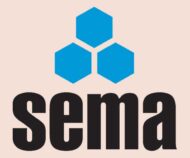Our first question this month asks about Mesh Backing and the second is a query on Shelving Height.
 Mesh Backing
Mesh Backing
Q. I am interested in understanding the requirement for “mesh” backing on racking that are back-to-back with other racks?
A. Mesh or netting is typically specified on the back of racking to inhibit goods from falling into particular areas. The provision of mesh backing itself is unlikely to stop the goods falling but it can help ensure that the goods fall within the footprint of the rack rather than beyond the rack. Mesh backing is unlikely to stop pallets being pushed from a rack and the provision of mesh backing is no substitute for good handling practices and a well-trained workforce.
Mesh backing is normally specified following a risk assessment and, as such, it is more commonly specified at the back of singlesided racks rather than in the middle of double-sided runs. The normal reason to specify mesh backing is to try to inhibit goods falling into an area where there might be people or, sometimes, equipment.
Each warehouse situation is different and we are not aware of any codified guidance stating where or when mesh backing should be provided. As always, the first choice in any risk assessment is to eliminate the hazard but, assuming that your RA shows the need for general protection, typical examples where mesh backing might be specified are when there is a walkway, workstation or other pedestrianised area behind the racking and there is a risk that goods could fall onto people in that area. In a similar vein overhead mesh guarding is often specified if there are any locations where you have walkways or workstations below stored goods.
Shelving Height
Q. Is there a legal height for shelving that is not attached to the floor or wall?
A. In general shelving codes such as the SEMA “Code of practice for design of Low-rise static steel shelving” and “FEM10.2.06-1 Hand loaded low-rise steel static shelving – Verification by experimental methods – Shelving design code – Part 1” recommend that shelving should not be attached to the building structure. Please be aware that these codes give recommendations and good practice rather than “legal” requirements. In terms of fixing to the floor this depends upon the height to width ratio (H:W) of the shelving. In this context the height is the dimension from the floor to the topmost loaded shelf. The depth is the overall depth of the frame and, in the case of shelving that is joined ‘back-to-back’ to form double sided runs, the depth is the overall depth of the two frames plus the space between them (provided that the links joining the frames are at not more than 2.0m centres vertically).
The SEMA code recommends the following;
For height to depth ratios not exceeding 4 to 1 the shelving can be free standing without the need to fix to floor. Care should be taken to ensure that unsuitable floor coverings are identified. For instance, carpet can result in unstable structures and might need to be removed.
For height to depth ratios above 4 to 1 but not exceeding 6 to 1 and where the shelving is subjected only to gravity loads plus incidental horizontal forces from loading and off-loading of shelves the minimum requirement is that each upright on the perimeter of a run shall be fixed to the floor through its base plate by a fixing capable of safely resisting a horizontal shear load of not less than 3kN and a tensile force of not less than 2kN.
Of course, not all racking and shelving available in the market today is designed according to the SEMA (or FEM) codes.
SEMA Annual Safety Conference 2022
The 2022 SEMA Safety Conference has been scheduled for Thursday, 3 November; the venue will be the National Motorcycle Museum, Solihull.
SEMA Technical Enquiries
We hope you find the above articles, and those in previous editions, interesting. If you have a query send it to us by email to tq@sema.org.uk and we will do our best to have it answered.
SEMA Rack Safety Awareness and Inspection Courses
SEMA runs a one-day safety course on Rack Safety Awareness and Inspection. These courses are aimed at end users, giving an in-depth look at the need for inspections, how to conduct an assessment and what actions to take when this is completed.
SEMA Approved Rack Inspectors Qualification
This qualification is aimed at professionals who conduct rack surveys as an integral and significant part of their duties. It involves delegates in undertaking an in-depth SEMA Course, together with an examination and practical assessment. CPD will be an important part of the qualification, demonstrating to end users that SEMA Approved Inspectors maintain a high professional standard.
SEMA Publications
SEMA has 26 publications in stock – Codes of Practice, ‘Guides’ and European documents – all of which are available from our Offices.
SEMA USERS Club
SEMA runs a USERS Club designed to be of benefit to purchasers and users of storage equipment. Members receive newsletters, access to specialised events and discounted rates on publications and codes of practice.
SEMA




Comments are closed.